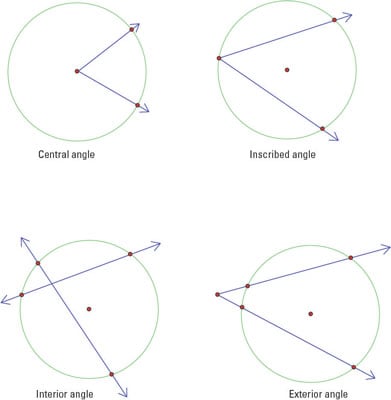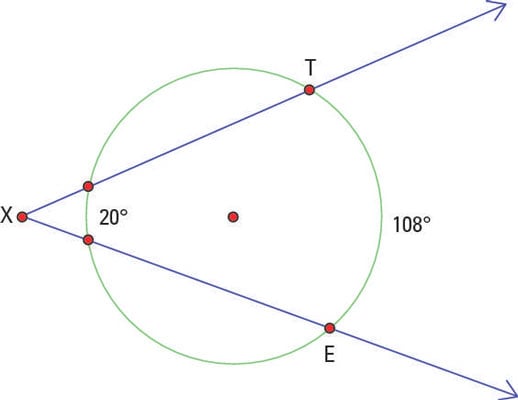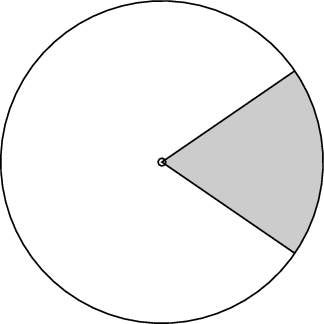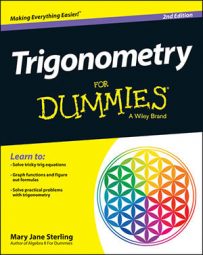
Central angle
A central angle has its vertex at the center of the circle, and the sides of the angle lie on two radii of the circle. The measure of the central angle is the same as the measure of the arc that the two sides cut out of the circle.Inscribed angle
An inscribed angle has its vertex on the circle, and the sides of the angle lie on two chords of the circle. The measure of the inscribed angle is half that of the arc that the two sides cut out of the circle.Interior angle
An interior angle has its vertex at the intersection of two lines that intersect inside a circle. The sides of the angle lie on the intersecting lines. The measure of an interior angle is the average of the measures of the two arcs that are cut out of the circle by those intersecting lines.Exterior angle
An exterior angle has its vertex where two rays share an endpoint outside a circle. The sides of the angle are those two rays. The measure of an exterior angle is found by dividing the difference between the measures of the intercepted arcs by two.Example: Find the measure of angle EXT, given that the exterior angle cuts off arcs of 20 degrees and 108 degrees.

Find the difference between the measures of the two intercepted arcs and divide by 2:

The measure of angle EXT is 44 degrees.
Sectioning sectors
A sector of a circle is a section of the circle between two radii (plural for radius). You can consider this part like a piece of pie cut from a circular pie plate.
You can find the area of a sector of a circle if you know the angle between the two radii. A circle has a total of 360 degrees all the way around the center, so if that central angle determining a sector has an angle measure of 60 degrees, then the sector takes up 60/360 or 1/6, of the degrees all the way around. In that case, the sector has 1/6 the area of the whole circle.
Example: Find the area of a sector of a circle if the angle between the two radii forming the sector is 80 degrees and the diameter of the circle is 9 inches.
-
Find the area of the circle.
The area of the whole circle is

or about 63.6 square inches.
-
Find the portion of the circle that the sector represents.
The sector takes up only 80 degrees of the circle. Divide 80 by 360 to get

-
Calculate the area of the sector.
Multiply the fraction or decimal from Step 2 by the total area to get the area of the sector:

The whole circle has an area of almost 64 square inches, and the sector has an area of just over 14 square inches.

